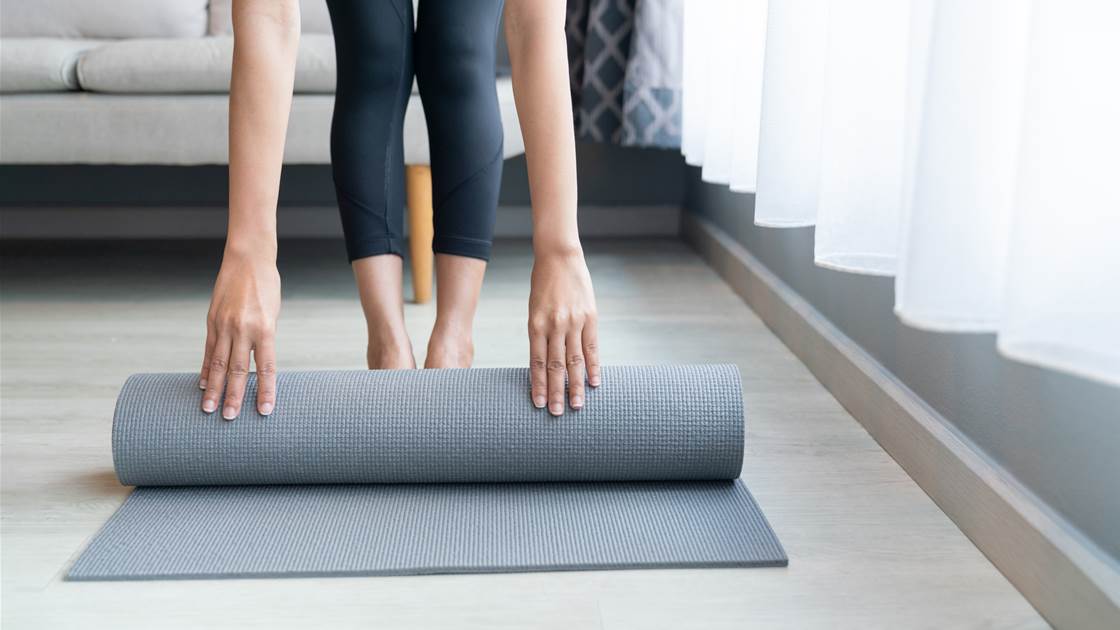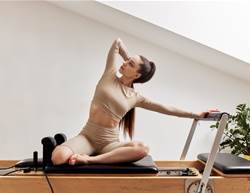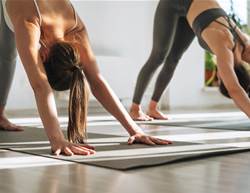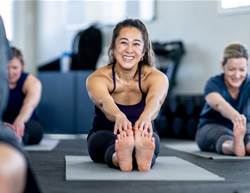Yoga can be amazing for you physically, emotionally, psychologically and spiritually – if it’s done correctly. The more you practice, the more ‘in tune’ you become with your body; knowing best what is good for you (and not so good).
But if you’re joining a beginner class there are a few things to make sure you stay safe within your limits. Stay focused on mindful, intentional and breath-centred movement, and avoid trying to ‘keep up’ with the class. Don’t get caught up in the sense of competition or feeling like you need to push your body harder – especially in ‘power’ and hot yoga styles of practices.
Here are some tips to keep in mind the next time you’re hitting the yoga mat to avoid an injury.
If you have a chronic health concern, as one in two people do, make sure you’ve advised your teacher before the class starts (Ideally, they will have asked you to fill out a client information form). If they seem at all uncertain about how to keep you safe, look for another teacher (or a qualified yoga therapist or teacher who specialises in your health concern).
There are some poses that are more likely to cause harm, but the good news is there is always another pose that can provide you with the same or similar health benefits without the risk.
In general, you want to avoid anything that:
- causes or increases pain;
- creates sharp sensations inside of the joints or shooting down the limbs;
- causes numbness; or that
- makes you uncomfortable to the point where you can’t breathe well
The poses most linked to injury include: Inversions such as Headstand, Shoulderstand, Plow Pose or Ear Pressure Pose
In addition to the risk of falling in headstand; exert caution if you’re experiencing any of these health concerns: neck, back or shoulder injuries, eye conditions like glaucoma, ear infections, heartburn or indigestion, headache, high or low blood pressure, osteoporosis and extreme risk for people with hypertension or heart disease and risk of stroke.
Consider instead a gentle inversion such as Legs up the Wall (seen below in the image at far right)

Other poses that tend to result in more injury include arm balances like Flying Crow (seen at left) or and Side Plank which lend themselves wrist and shoulder injuries.
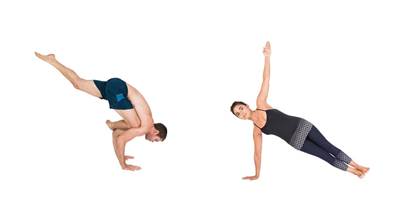
Be mindful of deep back bends, particularly when you’re not fully warmed up. Poses like Camel pose and Wheel Pose are likely to aggravate (and even create) disc problems (and in wheel, there is a tendency for people to put pressure on their neck as they move into the pose, which is also extremely dangerous).
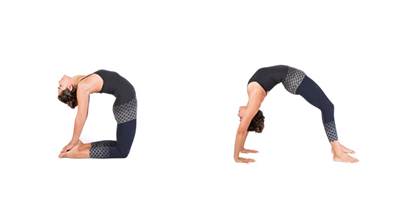
A great rule of thumb is, if you can’t remain steady and even in your breath as you transition in and out of, and when holding a pose, then you’ve pushed beyond your limit and need to back off.
Try these 4 simple yoga moves to feel calmer
